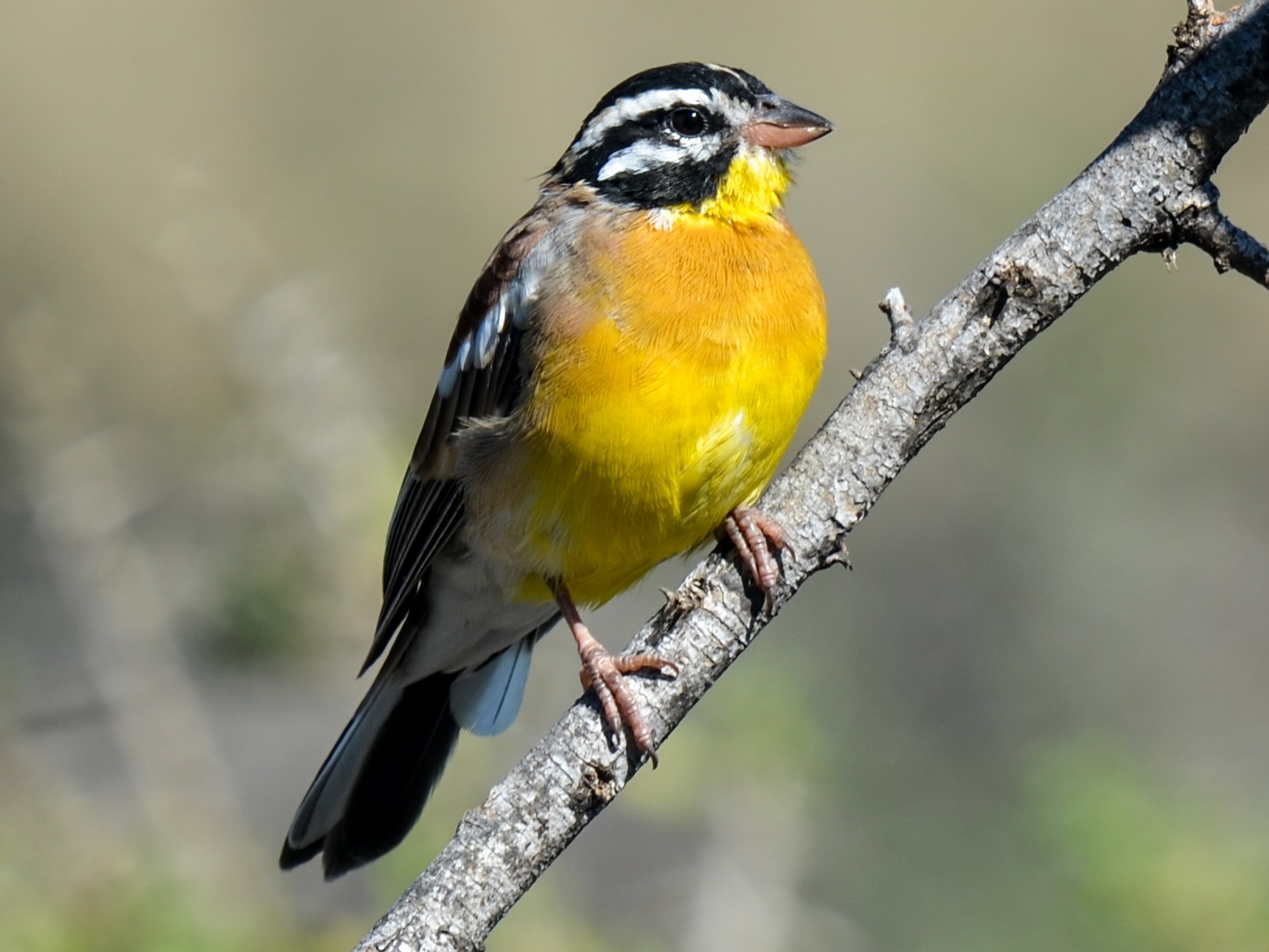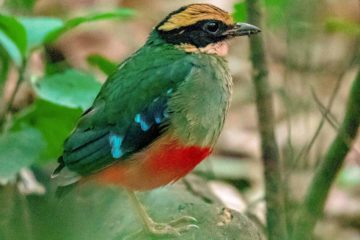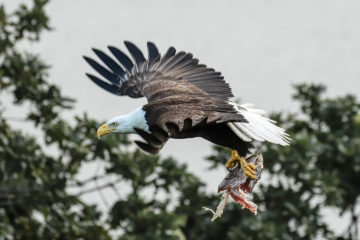18 days birds of Uganda safari for photographers
On this 18 days birds of Uganda is among the most exciting natural history and bird watching safari. It covers most of Uganda’s finest wildlife and diverse bird watching sites of Uganda including Queen Elizabeth and Murchison Falls National Parks, Semliki, Kibale as well as Africa’s best shoe-bill location, the Mabamba Swamp. We shall take you to the best destinations, sites and spots for birding, and some of the best accommodation facilities in Uganda. It has been noted that most of Uganda Lodges have the best reputation in ecotourism. The lodges and the hotels that we use are simple and luxurious in nature, strategically located to optimize Uganda birding opportunities. With the help of a superb network of site guides that meet our standards, our experienced tour leaders will attend to the needs of each participant; whether one is a novice birder or someone with years of field experience; we shall work towards the satisfaction of all.
IMPORTANT NOTES ABOUT OUR SAFARIS:
SAFARI CUSTOMIZATION
This Trip can be customized just in case it doesn’t suit your interest! Don’t hesitate to contact us.
DATES
This trip being a private tour, departure can be organized for anytime throughout the year subject to the availability of accommodation and transport.
ACCOMMODATION
The bookings with the hotels mentioned in the program depend on availability. Reservations will only be made after your booking.
In case the mentioned hotels are not available during the requested period, we will do our best to book a hotel in the same class for you- of course after consulting you.
GORILLA AND CHIMP PERMITS
It is not possible to ‘reserve’ gorilla and chimpanzee permits. Therefore, we can only buy them after your bookings/down-payment and it all depends on availability.
TRANSPORT
We bring quality to your fore sight, with great customized safari vehicles (4×4) for easy wildlife viewing. All clients will have a dedicated window seat. Your professional driver/guide will be at your disposal for questions or translations.
Day 1: Arrival and transfer to your accommodation
Day 2: Birding Mabamba Wetlands then travel to Lake Mburo National Park.
Early in the morning after breakfast (6:00am), you will be picked by our EBS TOURS Guide and head out to nearby mabamba swamp on the shores of Lake Victoria. This is one of the few remaining swamps in the country protected by the local communities an extensive papyrus swamp with its labyrinth of channels and lagoons, mabamba swamp is classified as an important birding area, and home to several pairs of Shoebills, Uganda’s most famous avian resident. This charismatic monotypic species is certainly amongst the most sought-after birds in Africa, and we’ll make special efforts today to find it by paddling through the channels by boat. There will, of course, be a good selection of classic East African water birds, including Long-tailed Cormorant, Goliath Heron, African Open-billed, Saddle-billed, and Marabou Storks, Hammerkop, White-faced Whistling-Duck, Yellow-billed Duck, African Fish-Eagle.
Marsh-Harrier, African Water Rail, Purple Swamp hen, Allen’s Gallinule, African Jacana, Long-toed and Spur-winged Plovers. Apart from the numerous water birds, we are likely to see a nice variety of open country and water edge species, perhaps including Speckled Pigeon, African Green Pigeon, Eastern Plantain-eater, Malachite, Giant, and Pied Kingfishers, Blue-headed Coucal, Blue-breasted Bee-eater, Crowned Hornbill, Angola and Rufous-chested Swallows, Winding Cisticola, Greater and Lesser Swamp-Warblers, Papyrus Yellow Warblers, Swamp Flycatcher, Scarlet-chested Sunbird, Papyrus Gonolek, Slender-billed, Northern Brown-throated, and Golden-backed Weavers, and Papyrus Canary.
In the afternoon we’ll travel to our first of many national parks, Lake Mburo. This park has varied habitats from open Acacia woodlands, to a number of papyrus-lined lakes and swamps.
We’ll reach in the evening and the following day to cover several different habitats. Some of the many species we’ll search for en route to the park, around the woodland in the immediate vicinity of Rwonyo (at lake Mburo) and within the park include Black-headed, Squacco, and Rufous-bellied Herons, Hadada Ibis. Yellow-billed (Black) Kite, Spur-winged Goose, Comb Duck, Black-chested Snake-Eagle, Lizard Buzzard. Palm-nut and White-backed Vultures, Wahlberg’s and Verreaux’s Eagles, Crested Francolin, Crowned Crane, African Finfoot, Black-bellied Bustard, Temminck’s and Bronze-winged Coursers, Senegal.
Crowned, Wattled, and Brown-chested Lapwings, Emerald Spotted and Blue-spotted Wood Doves, Brown Parrot, Red-eyed Dove, Bare-faced Go-away Bird. White-browed Coucal, Speckled and Blue-naped Mousebirds, Little, White-rumped and African Palm Swifts, Woodland Kingfisher, Little Bee-eater. Lilac-breasted and Broad-billed Rollers, Green Wood-Hoopoe, Common Scimitarbill, African Grey, Spot-flanked Barbet, Nubian Woodpecker, Angola Swallow, African Pied Wagtail, African and Long-billed Pipits. Red-shouldered Cuckoo-shrike, Dark-capped Bulbul, African Thrush, Trilling Cisticola, Yellow-breasted Apalis, Tawny-flanked Prinia, Grey-backed Camaroptera, Grey-capped. Warbler, Red-faced Crombec, White-winged Black Tit, Chinspot Batis, Mariqua, Olive-bellied, and Red-chested Sunbirds, Pied Crow, Greater Blue-eared, Splendid, Rüppell’s Long-tailed Starlings. Black-headed, Northern Brown-throated, Village, Vieillot’s Black, and Slender-billed Weavers, Northern Grey-headed Sparrow, Bronze Mannikin, and Yellow-fronted Canary. If we are lucky, we will even see nomadic Weyn’s Weaver. Stay at Mihingo Lodge
Day 3: Lake Mburo National Park
This park contains of multiple habitats, and our time will be divided between birding an extensive area of wetland, some forested areas, and open country with numerous mammals. No fewer than 300 different bird species have been recorded in the park, an indication of the high diversity present here. The more open grassland north of the camp, particularly along the Zebra Track, is worth exploring for species such as Coqui Francolin, Red-necked Spurfowl, Black-bellied Bustard, Temminck’s Courser, and African Wattled Lapwing, and it is here where small numbers of the migratory Brown-chested Lapwing can be regularly observed. After dusk, we’ll have the opportunity to do some spotlighting along the entrance road, which may produce some interesting nocturnal species, such as the African Scops Owl, Verreaux’s Eagle-Owl, and Black-shouldered, Fiery-necked, and Pennant-winged Nightjars. If it can be arranged, a night game drive may be possible.
Some additional species that we’ll search for not mentioned above include, African Darter, Striated Heron, Spur-winged Goose, African Marsh Harrier, African Hawk-Eagle, Common. Quails, Water Thick-knee, Red-Faced Barbet, Rufous-naped and Flappet Larks, Rufous–chested Swallow, Yellow-throated Long Claw, Black Cuckoo-Shrike, Singing, Long-tailed (or Tabora) and
Siffling Cisticolas, White-winged Warblers, Lead-colored Flycatcher, African Penduline-Tit, Black-headed Oriole, Tropical Boubou, Southern Red Bishop, Brubru, and Red-headed, Little, and Holub’s Golden-Weavers. We’ll check the swamps in the park for secretive papyrus specialities, such as the Papyrus Gonolek.
Mammals will be a large part of our visit to this park, and the many species we might see include the shy bushbuck, graceful Impalas, and Common Zebras, all found out in the open, park-like woodland. At night we’ll again look for African Scops-Owls and Black-shouldered Nightjar. Stay at Mihingo Lodge
Day 4: Birding to Ruhiija
Very early in the morning after breakfast (6:30am), transfer to Bwindi impenetrable forest, the road is good for birding. You will have chances of picking up a few species as you drive to Bwindi. African Cuckoo-hawk, Coqui Francolin, Scaly Francolin, Lilac Breasted Roller, are likely to be spotted along the road.
Bwindi National Park is a UNESCO World Heritage Site and is home to approximately half of the world endangered population of Mountain Gorillas. This vast reserve offers arguably the most productive montane forest birding in Africa and supports 23 of Uganda’s 24 Albertine Rift endemic bird species.
Once part of a much larger forest that included the Virunga Volcanoes in neighboring Rwanda, Bwindi Impenetrable National Park is now an ecological island within a sea of human cultivation and therefore of big conservation importance. Stay at Gorilla Mist Camp
Day 5: Gorilla Tracking
On this day, we set off early (6:00am), with packed lunch, to the park headquarters for a briefing prior to Gorilla Tracking. This is the most exciting lifetime experience of all time. The gorillas are gentle animals and it is an unforgettable experience to photograph them as they interact. It is a wonderful experience to stare into the eyes of these gentle giants; watch them in awe as they play and go about their daily activities. It is indeed a “once in a lifetime” experience that you must never miss. Each encounter is different and has its own rewards; you are likely to enjoy the close view of adults feeding, grooming and resting as the youngster’s frolic and swing from vines in a delightfully playful display. We will also look for other primates like the L’ Hoest Monkey, Guereza Colobus; Red-tailed, and Blue monkeys. Mammals include the Rwenzori Duiker, Yellow-back duiker, Caruther’s, Bohm’s and Alexander Squirrels, and many other species. Stay at Gorilla Mist Camp
Day 6: Birding Mubwindi Swamp
We spend the entire day birding the Mubwindi Swamp area. The 4km trail to Mubwindi Swamp is the best place for some of the most difficult to find of all rift endemics. This includes Grauer’s (African Green) Broadbill, the beautiful Regal Sunbird, and Archer’s Robin-Chat. Mubwindi Swamp is also home to Dwarf Honeyguide, Stripe-breasted Tit, Ruwenzori Apalis. African Hill Babbler (sometimes treated as a separate species from Ruwenzori Hill Babbler), the rare and localized Grauer’s Scrub-Warbler.
Some of the many species we have a chance of seeing here include Black Goshawk, Augur Buzzard, Crowned Hawk-Eagle, Handsome Francolin. Olive (Rameron) Pigeon, Bronze-winged Pigeon, Black-billed, Ruwenzori, and Ross’s Turaco, African, Barred Long-tailed, and African Emerald Cuckoos. Red-chested Owlet, Narina and Bar-tailed Trogons, Black and Cinnamon-chested Bee-eaters, Blue-throated Roller. White-headed Wood hoopoe, Grey-throated, Double-toothed, and Yellow-spotted Barbets, Western and Yellow-rumped Tinkerbird, Thick-billed and Dwarf Honeyguides. Rufous-necked Wryneck, Tullberg’s, Speckle-breasted, Elliot’s, and Olive Woodpeckers, African Broadbill, Rock Martin, Black Saw-wing.
Gray and Petit’s Cuckoo-Shrike, Ansorge’s, Kakamega and Cabanis’ Greenbuls, White-tailed Ant-Thrush, Kivu Ground-Thrush, Olive and Mountain Thrushes, Red-throated Alethe, Chubb’s Cisticola. Banded Prinia, Ruwenzori, Black-throated, and Black-faced Apalis, Olive-green Camaroptera, Grauer’s Warbler, Cinnamon and Black-faced Bracken-Warblers, Mountain Yellow Warbler. White-browed Crombec, Short-tailed Warbler, Red-faced Woodland-Warbler, White-eyed Slaty- Flycatcher, Yellow-eyed Black-Flycatcher, Sooty Flycatcher, Chapin’s Flycatcher.
White-starred Robin, White-bellied and Archer’s Robin-Chats, Ruwenzori Batis, White-tailed, and African Blue-Flycatchers, Pale-breasted, Mountain, and Gray-chested Illadopses. Ruwenzori Hill Babbler, Gray-headed, Western Violet-backed, Green, Green-headed, Blue-headed, Green-throated, Stuhlmann’s, Northern Double-collared, and Regal Sunbirds, Mackinnon’s Shrike. Ludher’s, Gray-green, Many-colored, and Lagden’s Bush-shrikes, Velvet-mantled Drongo, Slender-billed, Waller’s, Narrow-tailed, Stuhlmann’s, and Sharpe’s Starlings. Black-billed, Strange, and Brown-capped Weavers, Jameson’s and Woodhouse’s Ant-peckers, and Red-faced and Dusky Crimson-wings. Stay at Gorilla Mist Camp
Day 7: Birding to Buhoma through “The Neck”
We bird to Buhoma section through “The Neck”. The Neck (where the forest narrows) offers excellent forest birding. Key species that we will look for there include many of the Albertine Rift Endemics that we may not have seen earlier. These include Handsome Francolin, Rwenzori Nightjar, Dwarf Honeyguide, African Green Broadbill, Archer’s Robin-Chat, Red-throated Alethe, Yellow-eyed Black-Flycatcher, Red-faced Woodland Warbler, Short-tailed Warbler, Grauer’s Warbler, Mountain Masked Apalis, Collared Apalis, Stripe-breasted Tit, Rwenzori Batis, Blue-headed Sunbird, Regal Sunbird, Strange Weaver, Dusky Crimsonwing.
A few other species we may encounter as well include Ayres’s Hawk-Eagle, Fine-banded and Cardinal Woodpeckers, Willcocks’s Honeyguide, Kakamega Greenbul, Red-tailed Greenbul, Red-tailed Bristlebill, Blue-shouldered Robin-Chat, Mountain Wagtail, Cassin’s Flycatcher, Equatorial Akalat, Black-faced Rufous Warbler, Dusky Tit, Chestnut Wattle-eye, Red-headed Malimbe, Dusky Twinspot, Cape Wagtail, Brown-backed Scrub-Robin, Mackinnon’s Fiscal, and Western Citril. Stay at Buhoma Community camp
Day 8: Birding the Main Trail
Species we will search for include Olive Long-tailed Cuckoo, Bar-tailed Trogon, Dusky Tit, Kivu Ground-Thrush, White-bellied Robin-Chat, Equatorial Akalat, White-tailed Ant-Thrush, Red-throated Alethe, White-bellied Crested- Flycatcher, White-eyed Slaty-Flycatcher, Gray-green Bushshrike, Northern Double-collared Sunbird, Black-billed Weaver and Magpie Mannikin. High exposed perches in the open forest are favoured by African Goshawk; the dazzling Black Bee-eater, Blue-throated Roller, Sooty Flycatcher and forest starlings including Waller’s, Stuhlmann’s and Narrow-tailed. One of Bwindi’s star avian attractions is the diminutive, pitta-like Neumann’s Warbler, a vocal yet very secretive bird! Other under-storey birds we hope to see include displaying African Broadbill; Banded Prinia and the handsome Black-faced Rufous-Warbler. The mid-storey and canopy support Elliot’s and Tullberg’s Woodpeckers; Cabanis’, Kakamega and Ansorge’s Greenbuls; the strange Grauer’s Warbler and White-browed Crombec. The rare Jameson’s Antpecker may also be seen probing under moss on dead branches or gleaning warbler-like in the canopy. Overhead, Scarce Swifts forage over the forest. Birding at Buhoma is a truly magical experience. Other wildlife that we may be fortunate enough to find here includes the huge Yellow-backed Duiker, Guereza Colobus; L’Hoest’s, Blue and Red-tailed monkeys; Chimpanzee and several species of Squirrels including Fire-footed Rope, Carruthers’ Mountain, Ruwenzori Sun and Red-legged Sun Squirrel.
Stay at Buhoma Community camp
Day 9: Birding to Queen Elizabeth national park
Today we shall start early(6:00am) and transfer to Queen Elizabeth National park through the Ishasha sector of Queen Elizabeth National Park (popularly known for its tree-climbing lions) while birding on the way. Birding on the way may produce species such as Grey-capped Warbler, African Long Crested Eagle, Augur Buzzard, Mackinnon’s Fiscal, Black-headed waxbill, Black and white Manikin, Senegal Coucal, Red Chested Cuckoo, and others.
The Park which is named after the Queen of England who visited it in 1954 is the second-largest national park in Uganda. In terms of diversity this park ranks among the best birding destinations in Uganda with over 610 species recorded, and a one-day record of 296 species. Hard-core birders will be treated to special birds of this park that include Harlequin Quail, Blue Quail, Small (Common) Buttonquail, African Crake, White-winged Warbler, Martial Eagle, African Skimmer, Verreaux’s Eagle-Owl, Papyrus Gonolek, Amur Falcon, Ovampo Sparrow hawk, Greater and Lesser Flamingo, Shoebill, Black Bee-eater, Caruthers’s Cisticola, Terek Sandpiper, Secretary Bird, and Temminck’s Courser. Mammals include African Elephant, Spotted Hyena, Leopard, Lion, Ugandan Kobs, Side-striped Jackal, Baboons, Chimpanzees, Bush and Water Bucks, Warthogs, Giant Forest Hogs to mention but a few.
Stay at Enganzi Lodge
Day 10: Game Drive in the Park & afternoon Launch Cruise on Kazinga Channel
After breakfast, (6:30am) we set out for a whole day game and bird watching drive in the park. Later in the afternoon, you have an exciting boat cruise on the Kazinga channel. The launch is one of the most exciting water activities in Uganda. The channel is a narrow neck of water that connects Lakes George and Edward, with excellent photographic opportunities for waterside birds and abundant Hippopotamus. Amongst the birds, you are likely to encounter include African Skimmer, Striated Heron, African Spoonbill, Water Thick-knee, Three-banded Plover, Marsh, Green, Wood and Common Sandpiper, Gray-headed Gull, Plain Martin Lesser Swamp-Warbler and Yellow-billed Oxpecker. Stay at Enganzi Lodge
Day 11: Birding to Kibale National Park
After breakfast, (6:30 am) we will drive to Kibale forest. This primates capital of the world is the best safari destination for chimpanzee tracking in East Africa. It contains one of the loveliest and most varied tracts of all tropical forests in Uganda. Hosts 13 species of primates including the chimpanzee. Has 1450 chimpanzees and these represent Uganda’s largest population of this endangered primate. Home to the rare L’hoest’s monkey and East Africa’s largest population of the threatened Red Colobus Monkey.
Other primates that you may see include the Guereza Colobus, Blue monkey, Grey-cheeked Mangabey, Red-tailed monkey, Olive Baboon, Bushbabies and Pottos. Kibale forest cover predominates in the northern and central parts of the park. Kibale is highest at the park’s northern tip which stands at 1590m above sea level. The park also boasts 325 bird species, including 6 that are endemic to the Albertine rift region. If you are lucky you may also see the African pitta, Green-breasted Pitta, Black bee-eater, Yellow-rumped Tinkerbird, Little Greenbul, Black-eared Ground-thrush, Brown-chested Alethe, Blue-breasted kingfisher, Abyssinian ground thrush, and the crowned eagle.
Stay at Chimpanzee Guest House
Day 12: Chimpanzee Tracking in the forest
After an early breakfast, (6:00am) we drive to Kanyanchu visitor center for briefing about the dos and don’ts when trekking chimps.
The activity may last from a few hours to several hours. Kibale forest is home to 13 primates.
Birding in the afternoon along the main road may be productive. Depending on the weather predictions, birding Bigodi wetland is also productive with riverine forest birds. Kibale National Park is a good site for a number of birds that are hard to find elsewhere. These include Speckle-breasted Woodpecker, Cabanis’s Greenbul and Joyful Greenbul as well as White-spotted Flufftail, Dusky and Olive Long-tailed Cuckoo, Lesser Honeyguide, Blue-shouldered Robin-Chat, White-chinned Prinia, Grey Apalis, Olive-green Camaroptera and White-collared Olive back.
Stay at Chimpanzee Guest House
Day 13: Birding to Budongo forest
Today more time is spent on the road up North. This is one of the very dirt roads of Uganda. There shall be a few stops for birding along the way. Optional birding along the main road at Budongo Busingiro is possible. Stay at the Masindi Hotel
Day 14: Whole day bird watching in the Royal Mile
A short bird watching drive from the Hotel at dawn will take us to one of the best of Uganda’s bird-watching spots, the Royal Mile. This is Uganda’s historically known leisure spot for the traditional King, hence the name Royal Mile. Here the forest has been cut back a few meters along the sides of the main trail, which makes it a particularly good viewing area in this excellent forest.
Uganda Special Bird species here include White-thighed and Black-and-white-casqued Hornbills, Yellow-spotted and Yellow-billed Barbets, Western Black-headed Oriole, along with Red-tailed and Blue Monkeys. Overhead, Sabine’s and sometimes Cassin’s Spinetails soar over the clearings. As we walk quietly along the trail, Red-tailed Ant-Thrushes skulk in the shadows, as do Red-tailed Bristlebill, Scaly-breasted, Pale-breasted and Brown Illadopsis. Greenbuls are always a challenge and include Cameroon Sombre, Slender-billed, Honeyguide and Spotted Greenbul, whilst other regular species are Speckled Tinkerbird, Chocolate-backed Kingfisher Yellow-crested Woodpecker, Green Crombec, Rufous-crowned Eremomela, Yellow-browed Camaroptera, Buff-throated Apalis, and both White-breasted and Grey-headed Negro finches.
Lower down we should see African Dwarf Kingfishers, White-spotted Flufftails and the elusive Nahan’s Francolin, believed to be one of the most handsome of all Ugandan birds. Other possibilities here are Great Sparrowhawk, Cassin’s Hawk-eagle, Crested Guinea fowl, Tambourine Dove, Grey Parrot, African Emerald and Dusky Long-tailed Cuckoos, Yellow bill, White-throated Bee-eater. Yellow-throated Tinkerbird, Yellow-spotted Barbet, Yellow-crested Woodpecker, Dusky Tit, Western Nicator, Blue-shouldered Robin-Chat, Forest Robin, Black-throated and Black-capped Apalis. Yellow-browed Camaroptera, Brown-crowned Eremomela, Lemon-bellied Crombec, Sabine’s and Cassin’s Spinetails, Wilcock’s Honeyguide, Yellow and Grey Long Bills, Jameson’s Wattle-eye. Blue-throated Brown and Little Green Sunbirds, Rufous Flycatcher Thrush, Yellow-mantled Weaver, Red-headed Malimbe, the Uganda Woodland Warbler and the Ituri Batis.
Stay at the Masindi Hotel
Day 15: Birding to Murchison Falls National Park
After breakfast, (6:00am) you drive northwards to Murchison Falls National Park,birding through the Escarpment. Special birds include Cliff Chat, Yellow-fronted Tinkerbird, Grey-headed Bush-Shrike, Singing Cisticola, Namaqua dove, Green-Winged Pytilia, Crested Francolin, Northern and Black-winged Red Bishops, Black-bellied Firefinch, Black-faced Waxbill and March Tchagra.
Stay at Pakuba Safari Lodge
Day 16: Morning Game drive, afternoon boat cruise to the bottom of the falls
After an early breakfast, (6:00am) we will have a morning game drive. In the lush Borassus grassland, you may be able to encounter elephant, buffalo, giraffe, and a variety of antelopes. You may also see some lions if you are lucky. After enjoying a packed lunch, we will then have an afternoon boat trip to the bottom of the falls. Here, you might have the best chance of sighting the rare shoebills (if lucky). You will also be dazzled with a variety of water birds including species like the Secretary Bird, Abyssinian Roller and Ground Hornbill, Pied Kingfisher, Red-throated Bee-eater, Goliath Heron, Saddle-billed Stork, Sacred Ibis, Fulvous Whistling-Duck, Senegal Thick-knee, Black-headed Lapwing, Long-toed Lapwing, Little Bittern, Osprey, Red-necked Falcon, Blue-breasted Bee-eater, Vinaceous Dove and Grosbeak Weaver.
Other specialities include Buff-bellied Warbler, Yellow-fronted Tinkerbird, Bar-breasted Firefinch, Red-winged Grey Warbler, Spotted Morning-Thrush, Marabou Stork, Red-throated Bee-eater, Silverbird, Beautiful Sunbird, Black-headed Gonolek, Speckle-fronted Weaver, Golden-backed Weaver, White-rumped Seedeater, Pel’s Fishing Owl, White Crested Turaco, Bruce’s Green Pigeon, Chestnut-crowned Sparrow Weaver, Carmine Bee-eater, Nightjars (Pennant-winged &Standard-winged), White-rumped Canary etc.
Mammals include; Hartebeest, Oribi, Uganda Kob, Elephants, Giraffe, Bushbuck, Buffalo, Lion, Leopard, Spotted Hyena, Jackal and Mongoose among others
Stay at Pakuba Safari Lodge.






Tour Reviews
There are no reviews yet.
Leave a Review